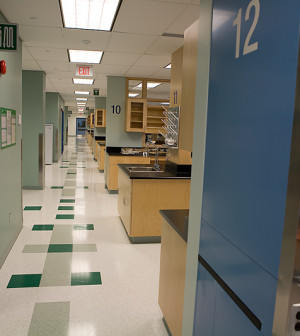- Skip Storing This Everyday Product in the Fridge Door
- Green Tea + B3 Pairing May Boost Brain Health
- Navigating Your Midlife Crisis: Embracing New Possibilities
- City Raccoons Showing Signs of Domestication
- Mapping the Exposome: Science Broadens Focus to Environmental Disease Triggers
- One Week Less on Social Media Linked to Better Mental Health
- Your Brain Changes in Stages as You Age, Study Finds
- Some Suicide Victims Show No Typical Warning Signs, Study Finds
- ByHeart Formula Faces Lawsuits After Babies Sickened With Botulism
- Switch to Vegan Diet Could Cut Your Greenhouse Gas Emissions in Half
Nearly 1 in 3 U.S. Babies Delivered by C-Section, Study Finds


Cesarean delivery was the most common inpatient surgery in the United States in 2011 and was used in nearly one-third of all deliveries, research shows.
The new study found that 1.3 million babies were delivered by cesarean section in 2011. The findings also revealed wide variations in C-section rates at hospitals across the United States, but the reasons for such differences are unclear.
“We found that the variability in hospital cesarean rates was not driven by differences in maternal diagnoses or pregnancy complexity. This means there was significantly higher variation in hospital rates than would be expected based on women’s health conditions,” lead author Katy Kozhimannil, an assistant professor in the School of Public Health at the University of Minnesota, said in a university news release.
The researchers analyzed data from more than 1,300 hospitals in 46 states. They found that the overall rate of C-section was about 33 percent. Between hospitals, however, that rate ranged between 19 and 48 percent, according to the study.
For women who’d never previously had a C-section, the overall C-section rate was 22 percent. Depending on the hospital, that rate ranged between 11 percent and 36 percent, the researchers said.
C-section rates ranged from 8 percent to 32 percent among lower-risk women and from 56 percent to 92 percent among higher-risk women, according to the study published Oct. 21 in the journal PLoS Medicine.
The findings highlight the roles that hospitals’ policies, practices and culture may have in influencing C-section rates, the study authors concluded.
“Women deserve evidence-based, consistent, high-quality maternity care, regardless of the hospital where they give birth, and these results indicate that we have a long way to go toward reaching this goal in the U.S.,” Kozhimannil said in the news release.
More information
The March of Dimes has more about cesarean delivery.
Source: HealthDay
Copyright © 2025 HealthDay. All rights reserved.










